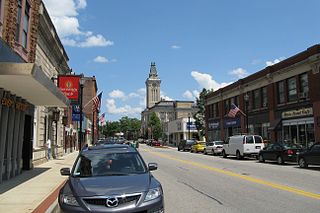
Marlborough is a city in Middlesex County, Massachusetts, United States. The population was 41,793 at the 2020 census. Marlborough became a prosperous industrial town in the 19th century and made the transition to high technology industry in the late 20th century after the construction of the Massachusetts Turnpike.

Nicola Sacco and Bartolomeo Vanzetti were Italian immigrant anarchists who were controversially accused of murdering Alessandro Berardelli and Frederick Parmenter, a guard and a paymaster, during the April 15, 1920, armed robbery of the Slater and Morrill Shoe Company in Braintree, Massachusetts, United States. Seven years later, they were executed in the electric chair at Charlestown State Prison.

BankBoston was a bank based in Boston, Massachusetts, which was created by the 1996 merger of Bank of Boston and BayBank. One of its predecessor banks started in 1784, but the merged BankBoston was short-lived, being acquired by FleetBoston Financial in 1999. In 2005, FleetBoston was purchased by, and merged into, Bank of America of Charlotte, North Carolina.

EbenSumner Draper was an American businessman and politician from Massachusetts. He was for many years a leading figure in what later became the Draper Corporation, the dominant manufacturer of cotton textile process machinery in the world during the late 19th and early 20th centuries. He served as the 44th Governor of Massachusetts from 1909 to 1911.
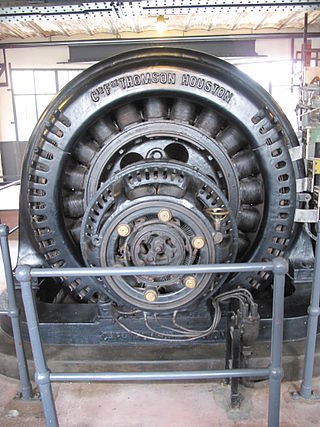
The Thomson-Houston Electric Company was a manufacturing company which was one of the precursors of the General Electric company.

Robert Grant was an American author and a jurist who participated in a review of the Sacco and Vanzetti trial a few weeks before their executions.

William Augustus Russell was an American businessman and political figure. He was the first president of the International Paper Company and served for six years as a United States representative from Massachusetts.
Webster Thayer was a judge of the Superior Court of Massachusetts, best known as the trial judge in the Sacco and Vanzetti case.

Alvan Tufts Fuller was an American businessman, politician, art collector, and philanthropist from Massachusetts. He opened one of the first automobile dealerships in Massachusetts, which in 1920 was recognized as "the world's most successful auto dealership", and made him one of the state's wealthiest men. Politically a Progressive Republican, he was elected a member of the Massachusetts House of Representatives, was a delegate to the Republican National Convention in 1916, and served as a United States representative from 1917 to 1921.

E. Howard & Co. was a clock and watch company formed by Edward Howard and Charles Rice in 1858, after the demise of the Boston Watch Company. The pair acquired some of the material and watches in progress, based upon a lien against the defunct company held by Rice, but they were unable to buy the existing factory or machinery, so they moved to Roxbury. Soon afterwards, Howard bought out Rice's interest and thereafter sought to make high quality watches based on his own unique designs and eccentric production methods. E. Howard & Co. also produced regulators, and marine clocks.
Calvin Hooker Goddard was a forensic scientist, army officer, academic, researcher and a pioneer in forensic ballistics. He examined the bullet casings in the 1929 St. Valentine's Day Massacre and showed that the guns used were not police issued weapons, leading the investigators to conclude it was a mob hit.

Charlestown State Prison was a correctional facility in Charlestown, Boston, Massachusetts operated by the Massachusetts Department of Correction. The facility was built at Lynde's Point, now at the intersection of Austin Street and New Rutherford Avenue, and in proximity to the Boston and Maine Railroad tracks that intersected with the Eastern Freight Railroad tracks. Bunker Hill Community College occupies the site that the prison once occupied.
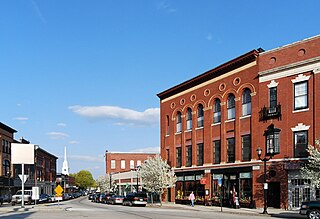
Hudson is a town in Middlesex County, Massachusetts, United States, with a total population of 20,092 as of the 2020 census. Before its incorporation as a town in 1866, Hudson was a neighborhood and unincorporated village of Marlborough, Massachusetts, and was known as Feltonville. From around 1850 until the last shoe factory burned down in 1968, Hudson was a mill town specializing in the production of shoes and related products. At one point the town had 17 shoe factories, many of them powered by the Assabet River, which runs through town. The many factories in Hudson attracted immigrants from Canada and Europe. Today most residents are of either Portuguese or Irish descent, with a smaller percentage being of French, Italian, English, or Scotch-Irish descent. While some manufacturing remains in Hudson, the town is now primarily residential. Hudson is served by the Hudson Public Schools district.
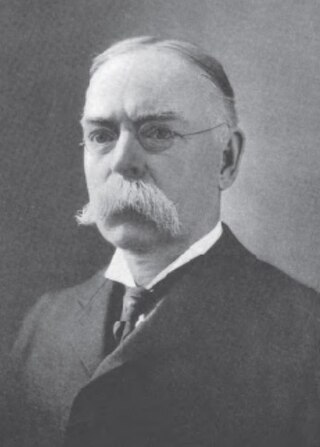
William Ball Rice was an American industrialist who co-founded Rice & Hutchins, a shoe manufacturing company with main offices in Boston, Massachusetts. He served as president of the company from its founding in 1866 until his death.

Henry Rice was an American Army officer in the War of 1812, a leading Boston merchant, a member of the Boston City Council and a member of the Massachusetts House of Representatives.
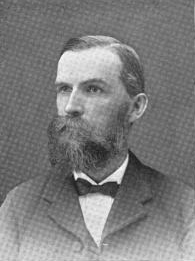
Simon Herbert Howe was a Massachusetts businessman and politician who was the first mayor of Marlborough, Massachusetts, and a member of the Massachusetts House of Representatives.
Arthur Dehon Hill was an American lawyer who served as District Attorney of Suffolk County, Massachusetts and was a defense counsel for Sacco and Vanzetti.
Louis F. Ingalls was an American politician who served as mayor of Marlborough, Massachusetts from 1938 to 1940.
"Sacco-Vanzetti Story" is a two-part American television play that was broadcast on June 3, 1960, and June 10, 1960, as part of the NBC Sunday Showcase series.

The history of Dedham, Massachusetts in the 20th century saw great growth come to the town. It played host to the Sacco and Vanzetti trial, saw the Endicott Estate and a number of schools constructed, a great deal of economic development, and growth in the number of services provided by the Town.


















